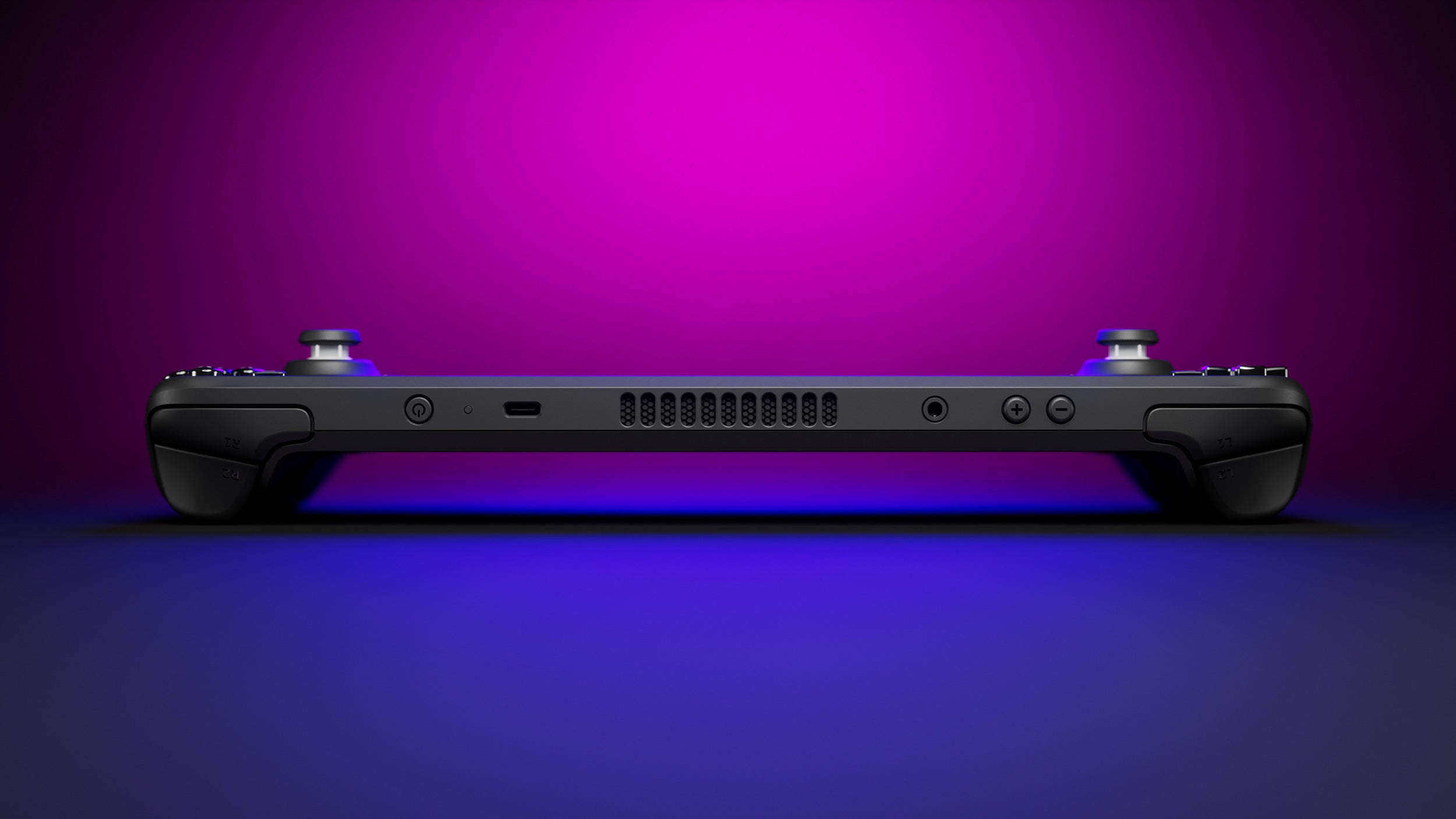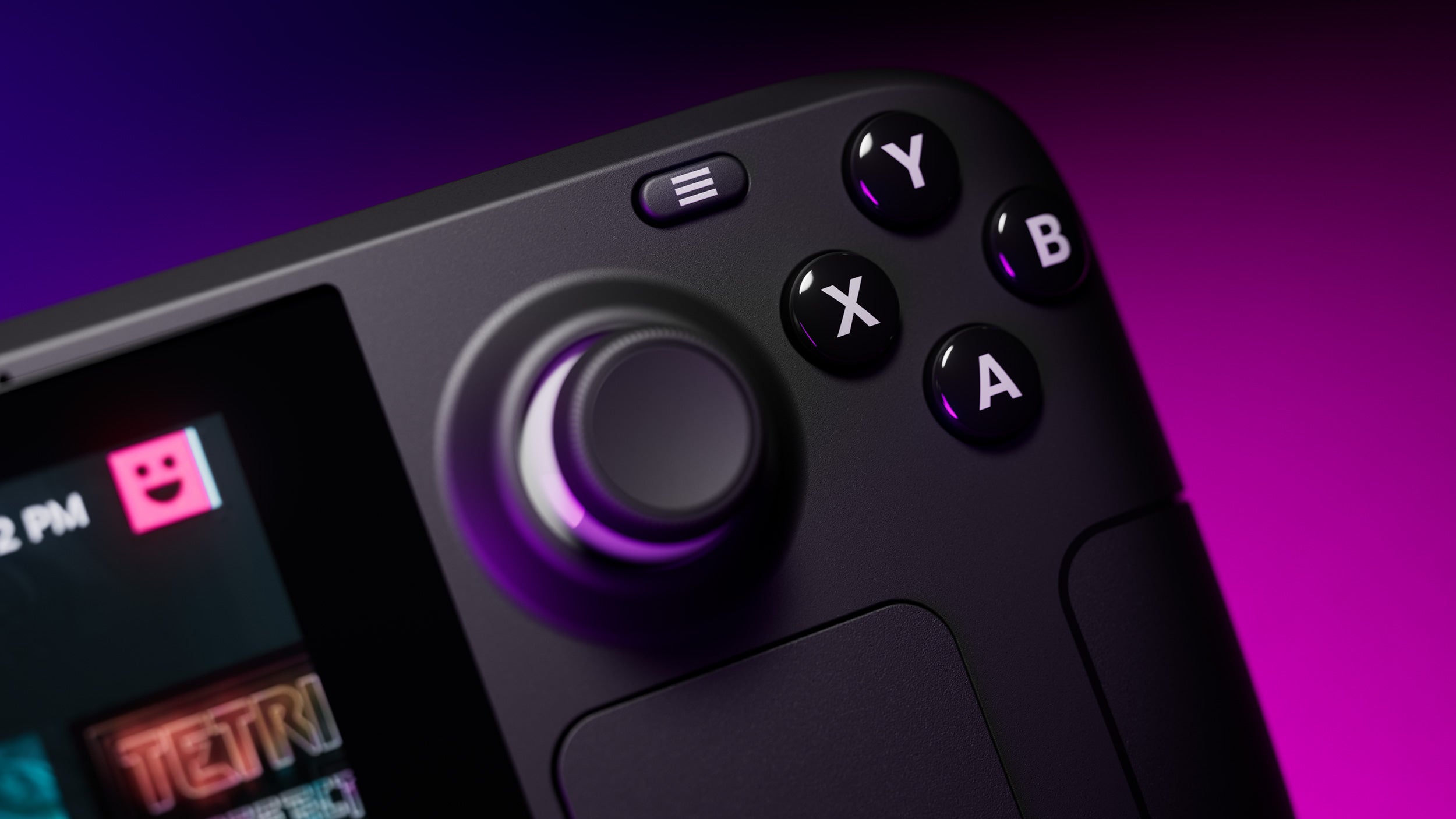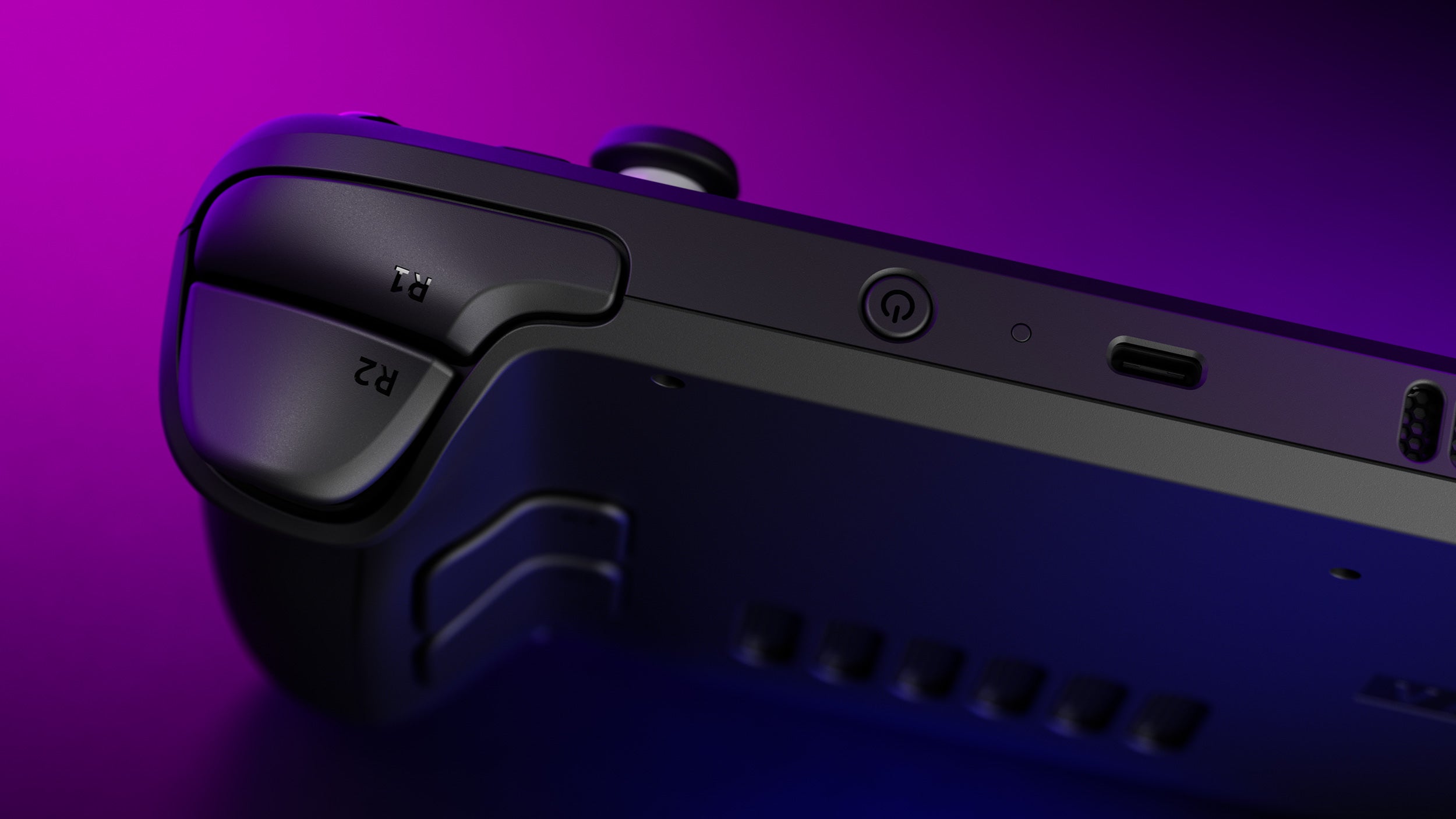You’ll find that interview in full below, so read on to find out how Valve’s Steam Deck team balanced performance and portability, whether you really shouldn’t open up your own Deck for mods and repairs, how its system-wide upscaling works, and more. And don’t miss our separate interview with Gabe Newell, where the Valve President and co-founder speaks on the Steam Deck, NFTs and cryptocurrencies, consolidation of the games industry and much more besides.
Now that the Steam Deck is heading out into the wild, how close would you say it is to the original concept? Is it everything you wanted it to be?
Pierre-Loup Griffais (PLG): Speaking for myself, definitely. I think when we were looking at the idea of a portable gaming PC that started getting developed here a couple of years ago, but also even beyond that, when we were looking at expanding Steam beyond the normal desktop PC and beyond Windows, and a lot of the efforts around inputs that we’ve had started in the past, I think the Steam Deck is a realisation of all these things. And it’s been working out pretty well. When we see people enjoying a bunch of games that they wouldn’t necessarily be playing on their desktop PC, or are able to play in more rooms, or at times where they’d not usually be able to play because their family and stuff, I think that shows that the console has been working well.
What can you tell us about the Steam Deck’s firmware and software update plans? There have been some pretty big feature additions in just the few weeks I’ve had mine.
PLG: You’re definitely seeing a little bit of the behind-the-curtain work that happens leading up to release. And we’ve definitely been working hard on polishing the UI features, but also adding a bunch of functionality to the system software. This is work that we’ve been able to defer a little bit, thanks to having delayed the product a few months because of supply issues. It’s things that we would have done back in December, if the timelines had been different, but I think it’s coming along pretty well.
What about plans for the future? Are you going to keep working on new features after launch?
PLG: Oh yeah, of course.
Jake Rodkin (JR): The nice thing about the thing launching is that there will then be a tonne of people who are using it, and then we’ll get to look and see what people are actually doing, where people are going with the Steam Deck, and weaving those things into whatever we’re doing next, along with future plans we’ve already got for the software.
Valve took the unusual step of suggesting Steam Deck owners shouldn’t open up the casing and tinker with the parts, like replacing the SSD, while also putting out a video showing exactly how to do that. Is it still Valve’s stance that messing around inside the Deck isn’t something people should do?
PLG: Yeah, I think it’s best left to professionals. At the end of the day, it’s a PC that that you own, and so we were very cognisant of that fact that people wanted to have all the data on what’s in there. But we recommend repairs are left to pros or returned to Valve for anything that goes wrong, if that comes up.
As a lot of PC owners have certain expectations on how customisable their hardware should be, was it difficult to kind of lean more towards fixed hardware? Or do you think most people just won’t mind?
PLG: It’s definitely a tradeoff. We recognise that there’s a big desire for people to be able to upgrade their PCs and we looked at it really hard, but at the end of the day, the goal of having the portability and the handheld form factor was pretty at odds with a lot of that. So we got in what we could, and we made it as modular as possible, given the goal of being portable, but it’s definitely a big tradeoff that that we had to walk there.
Do you think any game developers will start designing or optimising games specifically for the Steam Deck? Do you see it as kind of distinct platform in that way?
JR: I don’t think so. I think we hope that developers keep Steam Deck in mind when thinking about what the startup experience will be, when you load a game on Steam on the Deck versus on a PC. But the best thing about the Steam Deck, I think, is that it can play your Steam library. And it’s like a new window through which you can see Steam, more so than it’s a unique platform.
PLG: Yeah. If we expect that people do any work, it’ll be work that just makes their game better on Steam as a whole. And not just for Steam Deck: things like controller support or accessibility on smaller screens, or lower specced PCs. But it should be a thing that increases the depth of adaptability of their game and let it be played in a lot more different spots as well.
What’s been the reaction, or the feedback, from developers so far? Is there an eagerness to make their games more compatible with the Steam Deck?
PLG: I think the reaction we’ve seen so far has been very positive from the developers we’ve talked to. And we have hundreds of dev kits now in the wild. Universally, I think people are really happy that they don’t have to spend a lot of engineering effort in porting, and can just either focus on the user experience aspects I was mentioning before, if that comes up, or just be happy that their games are there and immediately available in more places to more users.
JR: The best news that you hear from a developer is when they get a dev kit, and they go “Oh, my game just worked.” And if you’ve ever done ports, or resuscitated an old title… if your starting line is, “Oh, it works,” that’s already pretty encouraging as a developer. And seeing that from people who have been working on the Deck has been really encouraging.
The last time I spoke to (Steam Deck developers) Greg Coomer and Lawrence Yang, they mentioned anti-cheat as an example of a potential issue that’s not entirely within Valve’s hands. How much progress has been made on this front, especially with Easy Anti-Cheat?
PLG: So back in the summer, we mentioned that we had lots of work happening behind the scenes right then, and versions of Proton that were still in development. And yeah, I’m happy to say that we’ve made tremendous strides on that front. In fact, today, we’re releasing Proton 7.0, which contains Easy Anti-Cheat support, and we’re going to be enabling the first set of games there. We’ve been working with lots of developers behind the scenes on checking out the support there, and validating their games. So it should be it should be a pretty good story by the time that comes out.
What about the compatibility review programme? Are you happy with how that’s going?
PLG: Yeah, I think so. There’s now hundreds of games that are showing Verified. And we’re ramping up these efforts, refining the process as we go - we’ve been working with partners, getting their feedback on it. I think that whole programme is a great addition to Steam, which should give a lot of data to users that want to approach the Steam Deck like an appliance and not have to think too hard on what’s going to work and what’s not.
That being said, for the PC users that are used to these kinds of tradeoffs, there’s tonnes of games that are not tested yet that work great. And I think we play a lot of those ourselves every day, and have great experiences with it. So I think, yeah, the Verifed programme is a great addition on top of that, but it’s not indicative of the games that work now. There’s a lot more stuff that works.
For a handheld it’s presumably quite tricky to balance the performance needs of the hardware with the need to keep the weight down, and to keep it small and portable. Was there anything specific, like more powerful internals or better cooling, or different control inputs, that you had to cut to keep everything portable?
PLG: I wouldn’t say so. I think that we definitely had the goal of being compatible with the whole catalogue in terms of horsepower, and portability came… I wouldn’t say second, but [performance] was definitely a thing that we prioritised. So we made sure to have enough room, and the thermal capacity and the horsepower, to be able to run the whole catalogue above 30fps. And we haven’t really found gaps in what we were able to do on that front. Similarly, in controls, the layout that we that we picked, the components, all make sure that you have an experience that is comparable to the top-of-the-line game controllers out there, as opposed to having something that won’t feel comfortable after a few hours. And we wanted to prioritise that over portability.
It’s a bit counterintuitive, but the compatibility aspect with the whole catalogue also affects the size in a way that we don’t often think about, which is the screen size. We worked a lot on lining up different screen sizes during development, trying to figure out what works well to the PC catalogue. And we found that under the size that we had, there’s a bunch of stuff that isn’t really legible and comfortable to play for extended periods of time. So when we talk about the size, people tend to gravitate around the horsepower or the size of the controls. But the screen size is actually a pretty a pretty important part of that as well. It’s really a whole package there, when you’re talking about compatibility.
JR: There’s a certain screen size threshold at which point you can’t make older games work. And a lot of other titles just magically work. So yes, the size of the screen fixes that.
Yeah, it is a bit taller than 16:9. Did you want a taller screen specifically?
PLG: Yeah, that that also helps a lot with compatibility with the back catalogue - you have different aspect ratios represented there that play a lot better on 16:10 with that extra vertical real estate - but it also just overall fits better in the general layout of what we’re trying to do.
The Steam Deck has a global AMD FSR (FidelityFX Super Resolution) setting. Could explain a bit about how that works? It’s obviously very different to how FSR normally works on games, where it’s something that developers have to implement.
PLG: Yeah, so we’ve implemented the AMD FSR algorithm directly into the OS compositor for the Deck. Anytime you’re in a situation where the game’s rendering is getting upscaled - either scanning out to an external display, so you have the deck connected to a 1080p or 4K TV, or the game is rendering at a lower resolution on the internal Deck screen, you can enable FSR and that enables the output image to have extra sharpening and extra image quality. It’s the same thing as what you would see that’s implemented directly into games, but it’s applied at the system level.
There’s some tradeoffs, like the HUD elements are also affected by it, as opposed to being rendered at native resolution. But overall we think it’s a good way to either reclaim some battery life if you want to play at a lower resolution when portable, or just improve the experience a little bit when you’re playing docked.
Do you have any recommendations for games you think work particularly well on the Deck? Or that you’re currently playing yourselves?
PLG: I’ve been having a blast with God of War lately. Oh, yes. But also, Vampire Survivors - two polar opposites.
JR: Yeah, I’ve also finally been playing God of War and Horizon Zero Dawn, which I never got to. I also didn’t think that I would be a big trackpad fan, but I’ve been going back to 90s point and click adventure games. I was playing Sam & Max Hit the Road and The Dig recently, so, yeah. Living giant pixel life with the trackpad.
PLG: In the in the same vein as adding FSR, we’re adding things like in integer scaling to the Deck as well, so when you’re playing these retro games at low resolutions you can keep the original art without having filtering on there. I think we’re going to roll that out this coming week or so.
JR: Only the crispest pixels.
PLG: Yep.
(Transcript edited for clarity.)



